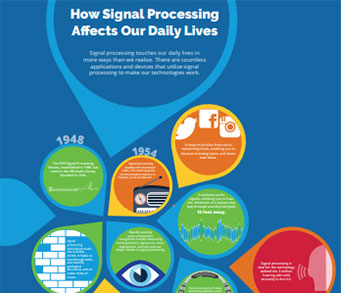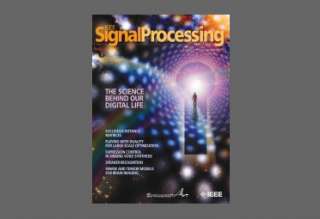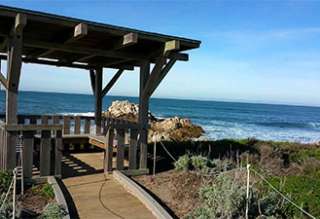SPS Feed
Top Reasons to Join SPS Today!
1. IEEE Signal Processing Magazine
2. Signal Processing Digital Library*
3. Inside Signal Processing Newsletter
4. SPS Resource Center
5. Career advancement & recognition
6. Discounts on conferences and publications
7. Professional networking
8. Communities for students, young professionals, and women
9. Volunteer opportunities
10. Coming soon! PDH/CEU credits
Click here to learn more.
The Latest News, Articles, and Events in Signal Processing

Postdoctoral Research Grant (BPD) for the R&D Integrated Program “C4 – Centro de Competências em Cloud Computing”
Reference: “C4_MP_D1-b (En)”
A novel scheme of edge detection based on the physical law of diffusion is presented in this paper. Though the most current studies are using data based methods such as deep neural networks, these methods on machine learning need big data of labeled ground truth as well as a large amount of resources for training.
Retrieving specific persons with various types of queries, e.g., a set of attributes or a portrait photo has great application potential in large-scale intelligent surveillance systems. In this paper, we propose a richly annotated pedestrian (RAP) dataset which serves as a unified benchmark for both attribute-based and image-based person retrieval in real surveillance scenarios.
Image annotation aims to annotate a given image with a variable number of class labels corresponding to diverse visual concepts. In this paper, we address two main issues in large-scale image annotation: 1) how to learn a rich feature representation suitable for predicting a diverse set of visual concepts ranging from object, scene to abstract concept and 2) how to annotate an image with the optimal number of class labels.
Zero-shot learning (ZSL) for visual recognition aims to accurately recognize the objects of unseen classes through mapping the visual feature to an embedding space spanned by class semantic information. However, the semantic gap across visual features and their underlying semantics is still a big obstacle in ZSL. Conventional ZSL methods construct that the mapping typically focus on the original visual features that are independent of the ZSL tasks, thus degrading the prediction performance.
The IEEE Transactions on Image Processing covers novel theory, algorithms, and architectures for the formation, capture, processing, communication, analysis, and display of images, video, and multidimensional signals in a wide variety of applications.
White Paper Due: June 1, 2019
Publication Date: July 2020
CFP Document
Lecture Date: April 2, 2019
Chapter: SPS Western Australia Chapter
Chapter Chair: Sven Nordholm
Topic: Hyperspectral Unmixing: Insights and Beyond
November 18-21, 2019
Location: Lanzhou, China
November 3-6, 2019
Location: Pacific Grove, CA, USA
Recently, nested and coprime arrays have attracted considerable interest due to their capability of providing increased array aperture, enhanced degrees of freedom (DOFs), and reduced mutual coupling effect compared to uniform linear arrays (ULAs). These features are critical to improving the performance of direction-of-arrival estimation and adaptive beamforming.
Graph-based representations play a key role in machine learning. The fundamental step in these representations is the association of a graph structure to a dataset. In this paper, we propose a method that finds a block sparse representation of the data by associating a graph, whose Laplacian matrix admits the sparsifying dictionary as its eigenvectors.
The state-of-the-art graph wavelet decomposition was constructed by maximum spanning tree (MST)-based downsampling and two-channel graph wavelet filter banks. In this work, we first show that: 1) the existing MST-based downsampling could become unbalanced, i.e., the sampling rate is far from 1/2, which eventually leads to low representation efficiency of the wavelet decomposition; and 2) not only low-pass components, but also some high-pass ones can be decomposed to potentially achieve better decomposition performance.
The optimal mean-reverting portfolio (MRP) design problem is an important task for statistical arbitrage, also known as pairs trading, in the financial markets. The target of the problem is to construct a portfolio of the underlying assets (possibly with an asset selection target) that can exhibit a satisfactory mean reversion property and a desirable variance property.
Two-dimensional (2-D) spectrum sensing is addressed in the context of a cognitive radar to gather real-time space-frequency electromagnetic awareness. Assuming a sensor equipped with multiple receive antennas, a discrete-time sensing signal model formally accounting for multiple snapshots of observations is introduced.
Beamforming is an attractive technique to improve the system performance for multi-input multi-output (MIMO) communications. Previous works mainly focus on improving the data transmission quality. However, the potential of beamforming for improving the localization quality is not yet fully studied.
We propose two-channel critically-sampled filter banks for signals on undirected graphs that utilize spectral domain sampling. Unlike conventional approaches based on vertex domain sampling, our transforms have the following desirable properties.
We present our results of applying wavelet theory to the classic problem of estimating the unknown parameters of a model function subject to noise. The model function studied in this context is a generalization of the second-order Gaussian derivative of which the Gaussian function is a special case.
Coprime sensor arrays (CSAs) can estimate the directions of arrival of O(MN) narrowband planewave sources using only O(M + N) sensors with the CSA product processor. All previous investigations on the product processed CSA's performance for detecting Gaussian signals assumed spatially white Gaussian noise.
Pages
SPS Social Media
- IEEE SPS Facebook Page https://www.facebook.com/ieeeSPS
- IEEE SPS X Page https://x.com/IEEEsps
- IEEE SPS Instagram Page https://www.instagram.com/ieeesps/?hl=en
- IEEE SPS LinkedIn Page https://www.linkedin.com/company/ieeesps/
- IEEE SPS YouTube Channel https://www.youtube.com/ieeeSPS










